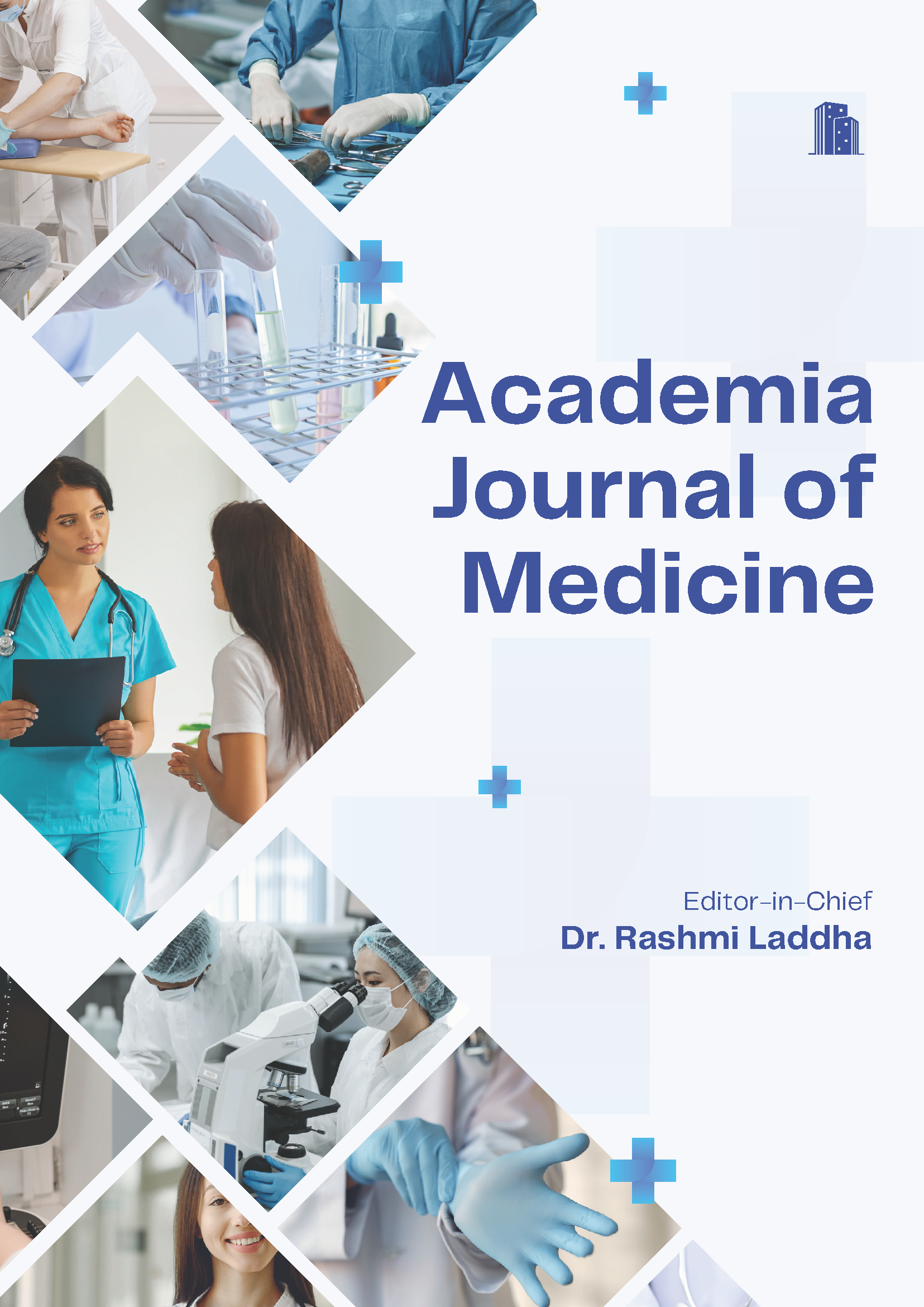Clinical Profile and Outcome of Dengue Fever in Tertiary Care Hospital at Kerala
Keywords:
Dengue Fever, Flaviviruses, Hemorrhagic FeverAbstract
Background: Among all flaviviruses, Dengue is the most common fever. Every year 2-5 lakh cases of Dengue hemorrhagic fever occur. The objective of the study was to evaluate the clinical profile of patients with Dengue fever at a hospital in Kerala. Subjects and Methods: Patients with more than 12 years of age and those admitted with fever, headache, and myalgia were assessed with other clinical characteristics (warning signs of dengue fever, signs of hemorrhage, signs of plasma leakage and signs of shock). Laboratory examinations such as Hb, total count, differential count, platelet count, packed cell volume, peripheral smear for the malarial parasite, and liver function test (including S. protein) and renal function test were carried out. Blood coagulation profiles such as Bleeding Time, Clotting Time, Prothrombin Time and aPTT were performed. Radiological findings like X-ray chest and USG abdomen were also performed. Results: Consequently dengue fever is ordinary in young adults. In the current study, males were more pretentious than females. Males were affected by 63.7% while females are affected by 36.3%. The most usual indication was fever (94.8%) experienced in all patients followed by headache (41.3%), Generalized weakness (77.5%), myalgia (51.7%), vomiting (57.7%). Predominant organ involvement was hepatic (transaminases, jaundice) followed by gastrointestinal (abdominal pain, distension, loose stools, vomiting, ascites) systems. The total survivors are 86(74.1%) whereas 30(25.8%) were non-survivors. Conclusion: Dengue fever usually affects male and young populace. Headache, fever, myalgia are ordinary at hand grumble however in the recent few years, the world has observed the diverse experimental appearance of the dengue fever in dissimilar epidemics, even in the same regions and even with the period of times.
Downloads
References
1. Shah I, Deshpande GC, Tardeja PN. The outbreak of dengue in Mumbai and predictive markers for dengue shock syndrome. J Trop Pediatr. 2004;50(5):301–306. Available from: https: //doi.org/10.1093/tropej/50.5.301.
2. Special programme for research, training in tropical diseases, and World Health Organization, dengue: guidelines for diag nosis, treatment, prevention and control, World Health Organi zation; 2009.
3. ; 2015.
4. Laul A, Laul P, Merugumala V, Pathak R, Miglani U, Saxena P. Clinical Profiles of Dengue Infection during an Outbreak in Northern India. J Trop Med. 2016;2016:1–7. Available from: https://dx.doi.org/10.1155/2016/5917934.
5. Mutheneni SR, Morse AP, Caminade C, Upadhyayula SM. Dengue burden in India: recent trends and importance of climatic parameters. Emerg Microbes Infect. 2017;6(1):1–10. Available from: https://dx.doi.org/10.1038/emi.2017.57.
6. Chen CM, Chan KS, Yu WL, Cheng KC, Chao HC, Yehcy. The outcomes of patients with severe dengue admitted to intensive care units. Medicines. 2016;95(31):1–5. Available from: https: //doi.org/10.1097/md.0000000000004376.
7. Clinical Manifestations and Management of Dengue/DHF/DSS. Trop Med Health. 2011;39((4 Suppl)):83– 7. Available from: http://dx.doi.org/10.2149/tmh.2011-S10.
8. Guzman MG, Halstaed SB, Artsob H. Dengue: a continuing global threat. Nat Rev Microbiol. 2010;8(12):7–16. Available from: https://doi.org/10.1038/nrmicro2460.
9. Daniel R, Philip R, Z A. A study of clinical profile of dengue fever in Kollam. Dengue Bulletin. 2005;29:197–202. 10. Khan SA, Dutta P, Topno R, Soni M, Mahanta J. Dengue Outbreak in a Hilly State of Arunachal Pradesh in Northeast India. Sci World J. 2014;2014:1–6. Available from: https: //dx.doi.org/10.1155/2014/584093.
11. Itoda I, Suganuma A, Totsuka K, Takasaki T, Imamura A, Negishi M, et al. Clinical Features of 62 Imported Cases of Dengue Fever in Japan. Am J Trop Med Hyg. 2006;75(3):470– 474. Available from: https://dx.doi.org/10.4269/ajtmh.2006. 75.470.
12. Mittal H, Faridi MMA, Arora SK, Patil R. Clinicohematologi cal Profile and Platelet Trends in Children with Dengue During 2010 Epidemic in North India. The Indian Journal of Pediatrics. 2012;79(4):467–471. Available from: https://dx.doi.org/10. 1007/s12098-011-0586-7. doi:10.1007/s12098-011-0586-7.
13. Chacko B, Subramanian G. Clinical, Laboratory and Radiological Parameters in Children with Dengue Fever and Predictive Factors for Dengue Shock Syndrome. J Trop Pediatr . 2007;54(2):137–140. Available from: https://dx.doi.org/10. 1093/tropej/fmm084.
14. Joshi R, Baid V. Profile of dengue patients admitted to a tertiary care hospital in Mumbai. Turkish J Pediatr. 2011;53(6):626– 657.
15. Ashis SK, Shibendu G. Clinico-pathological profile in the infants and children in dengue 2012 epidemic, Kolkata. Int J Med Sci Public Health . 2014;3(1):59–59. Available from: https://dx.doi.org/10.5958/j.2319-5886.3.1.012.
16. Nayakj B, Swain SK, Panda SR. A study of multiorgandysfunc tion in patients with dengue and its clinicohematological corre lationwithseverity. Asian J Pharm Clin Res. 2017;10(2):218– 221. Available from: https://doi.org/10.22159/ajpcr.2017. v10i2.15332.
17. Thanachartwet V, Desakorn V, Sahassananda D, Jittmittraphap A, Oer-areemitr N, Osothsomboon S, et al. Serum Procalcitonin and Peripheral Venous Lactate for Predicting Dengue Shock and/or Organ Failure: A Prospective Observational Study. PLOS Negl Trop Dis. 2016;10(8):e0004961–e0004961. Avail able from: https://dx.doi.org/10.1371/journal.pntd.0004961.
18. Chen CM, Chan KS, Yu WL, Cheng KC, Chao HC, Yehcy. The outcomes of patients with severe dengue admitted to intensive care units. Medicines. 2016;95(31):1–5. Available from: https: //doi.org/10.1097/md.0000000000004376.
19. Jain S, Mittal A, Sharma SK, Upadhyay AD, Pandey RM, Sinha S. Predictors of Dengue-Related Mortality and Disease Severity in a Tertiary Care Center in North India. Open Forum Infectious Diseases; 2017. Available from: doi:10.1093/ofid/ofx056.
20. Routrayss, Mohanty DP, Mishrad, Clinicalprofile. Intensive careUnit course and outcome of patients admitted in intensive care unit with dengue. Indian J Clin Anaesth . 2016;3(1):33–35.
21. Pinto RC, Dbd C, Bcd A, Sampaiovds, Passosrad C, Cfd. Mortality Predictors in Patients with Severe Dengue in the State of Amazonas, Brazil. PLoS One. 2016;11(8). Available from: https://doi.org/10.1371/journal.pone.0161884.
22. Ong A, Sandar M, Chen MI, Sin LY. Fatal dengue hemorrhagic fever in adults during a dengue epidemic in Singapore. Int J Infect Dis. 2007;11(3):263–267. Available from: https://dx.doi. org/10.1016/j.ijid.2006.02.012.
23. Pang J, Thein TL, Leo YS, Lye DC. Early clinical and laboratory risk factors of intensive care unit requirement during 2004–2008 dengue epidemics in Singapore: a matched case– control study. BMC Infect Dis. 2014;14(1):649–649. Available from: https://dx.doi.org/10.1186/s12879-014-0649-2.
24. Pang J, Salim A, Lee VJ, Hibberd ML, Chia KS, Leo YS, et al.. Diabetes with hypertension as risk factors for adult dengue hemorrhagic fever inapredominantlydengue serotype2epidemic:acasecontrolstudy; 2012. Available from: https://doi.org/10.1371/journal.pntd.0001641.
